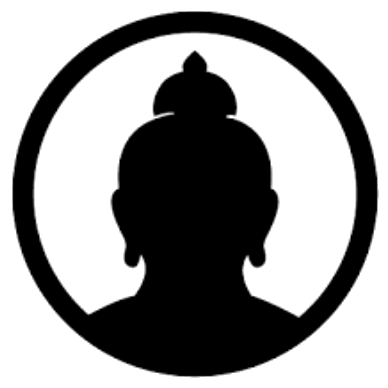An introduction to the world’s religious traditions through the lens of America. The religious traditions of humankind are shown here as circles, each containing a commonly used symbol of that tradition. But this visual image of separate boundaried circles—graphically convenient as it is—is highly misleading, for every religious tradition has grown through the ages in dialogue and historical interaction with others.
YOU MIGHT ALSO LIKE
CLEAR ALL
BY TOPIC
BY TEACHER
BY TYPE
FILTER

TOPIC
- Comparing Belief Traditions (18)
- Gender Challenges (16)
- Taoism (13)
- Gender Identity (12)
- Dharma (11)
- Gender Discrimination (11)
- LGBTQIA Well-Being (11)
- Spiritual Life (11)
- Awareness (9)
- Buddha Nature (9)
- LGBTQIA Sexuality (9)
- Paganism (9)
- Spiritual Awakening (9)
- Hinduism (8)
- Judaism (8)
- Meditation (8)
- Mindfulness (8)
- Neopaganism (8)
- BIPOC Well-Being (7)
- Inner Life (7)
- Christianity (6)
- Transgender Well-Being (6)
- Compassion (5)
- Gender Justice (5)
- Native American Beliefs (5)
- Nonbinary Well-Being (5)
- Spiritual Practices (5)
- Women’s Well-Being (5)
- Afterlife (4)
- Black Well-Being (4)
- Diamond Approach (4)
- Enlightenment (4)
- Faith and Identity (4)
- Fellowship and Community (4)
- Homophobia (4)
- Indigenous Well-Being (4)
- Inner Peace (4)
- Karma (4)
- Masculine/Feminine Dynamics (4)
- Philosophical Approaches (4)
- Self-Discovery (4)
- Self-Realization (4)
- Self-Reflection Practices (4)
- Spiritual Growth (4)
- Values (4)
- Wicca (4)
- Women’s Rights (4)
- Activism/Service (3)
- Body Image (3)
- Connection with Nature (3)
- Consciousness (3)
- Death and Dying (3)
- Emotional and Mental Health (3)
- Gratitude (3)
- Identity (3)
- Immortality (3)
- Motherhood (3)
- Sexuality (3)
- Social Justice (3)
- Spiritual Direction (3)
- Zen Buddhism (3)
- Coming Out (2)
- Connection (2)
- Ego (2)
- Faith (2)
- Habits of Mind (2)
- Happiness (2)
- Honoring Ancestors (2)
- Illness and Injury (2)
- Insight (Vipassana) Meditation (2)
- Intention (2)
- Islamophobia (2)
- Leadership (2)
- Love (2)
- Lovingkindness (2)
- Mindfulness Meditation (2)
- Mindfulness Practices (2)
- Moral Philosophy (2)
- Non-Duality (2)
- Presence (2)
- Psychology (2)
- Psychology and Spirituality (2)
- Racial Justice (2)
- Racism (2)
- Rebirth (2)
- Science and Spirituality (2)
- Self-Actualization (2)
- Self-Development (2)
- Self-Esteem (2)
- Self-Expression (2)
- Spiritual Development (2)
- Spiritual Healing (2)
- Spirituality and Politics (2)
- Sufism (2)
- Whiteness (2)
- Witchcraft (2)
- Yoga (2)
- Anxiety (1)
- Asatru (Norse) Paganism (1)
- Athlete Well-Being (1)
- Authenticity (1)
- Body Positivity (1)
- Boundary Confusion (1)
- Breathwork (1)
- Chanting (1)
- Christian Mysticism (1)
- Community Healing (1)
- Compassion Meditation (1)
- Courage (1)
- Creative Well-Being (1)
- Cross-Cultural Dynamics (1)
- Death or Loss of a Parent (1)
- Decision Making (1)
- Eating Disorders (1)
- Ecospirituality (1)
- Emotional Labor (1)
- Environmental Exploitation (1)
- Environmental Justice (1)
- Existentialism (1)
- Facing Own Death (1)
- Fatherhood (1)
- Fear (1)
- Feminism (1)
- Forgiveness (1)
- Freedom (1)
- Gender Transition (1)
- Generosity (1)
- God (1)
- Grief (1)
- Higher Calling (1)
- Imagination and Creativity (1)
- Indigenous Healing Approaches (1)
- Indigenous Rights (1)
- Jewish Renewal (1)
- Job Loss (1)
- Joy (1)
- Kabbalah (1)
- Kids and Sports (1)
- Kindness (1)
- Latinx Well-Being (1)
- Letting Go (1)
- LGBTQIA Parents (1)
- Life Challenges (1)
- Living with Illness (1)
- Lovingkindness Meditation (1)
- Mediums (1)
- Men’s Well-Being (1)
- Mind-Body Connection (1)
- Mythology (1)
- Offering Support to Others (1)
- Othering (1)
- Past Lives and Reincarnation (1)
- Personal Development (1)
- Physical Health (1)
- Prayer (1)
- Pregnancy and Childbirth (1)
- Racial Discrimination (1)
- Raising Sons (1)
- Sacred Feminine (1)
- Search for Purpose (1)
- Self-Acceptance (1)
- Self-Care (1)
- Self-Love (1)
- Self-Mastery (1)
- Setting Limits and Boundaries (1)
- Sex (1)
- Sexual Assault or Abuse (1)
- Shadow (1)
- Shamanism (1)
- Social Responsibility (1)
- Somatic Experiencing (1)
- Speaking Your Truth (1)
- Spiritual Fasting (1)
- Spirituality and Health (1)
- Suffering (1)
- Toxic Relationships (1)
- Transformation (1)
- Trauma Healing (1)
- Unity (1)
- Vulnerability (1)
- Witch (1)
- Work Challenges (1)
FILTER

TEACHER
- A. H. Almaas (4)
- Thubten Chodron (4)
- Bhikku Anālayo (3)
- David Steindl-Rast (3)
- Miles Neale (3)
- Muhammad (3)
- Myokei Caine-Barrett (3)
- Pema Khandro (3)
- Seyyed Hossein Nasr (3)
- Adyashanti (2)
- angel Kyodo williams (2)
- Buddha (2)
- Daisy Khan (2)
- Jack Kornfield (2)
- James Martin (2)
- Jesus (2)
- Joan Chittister (2)
- Karen Armstrong (2)
- Lao Tzu (2)
- Rebecca Solnit (2)
- Sandy Boucher (2)
- Albert Einstein (1)
- Aristotle (1)
- Beatrice Long Visitor Holy Dance (1)
- bell hooks (1)
- Chelsey Luger (1)
- David J. Wolpe (1)
- Elaine Pagels (1)
- Elizabeth Mattis Namgyel (1)
- Gaylon Ferguson (1)
- Hildegard von Bingen (1)
- Huston Smith (1)
- Jan Willis (1)
- John O’Donohue (1)
- Joseph M. Marshall III (1)
- Kamilah Majied (1)
- La Sarmiento (1)
- Lama Tsultrim Allione (1)
- Larry Yang (1)
- Lewis Howes (1)
- Mark Epstein (1)
- Mark Nepo (1)
- Moses (1)
- Norman Fischer (1)
- Pope Francis (1)
- Ram Dass (1)
- Robert Thurman (1)
- Roxanne Dault (1)
- Ruth Denison (1)
- Serene Jones (1)
- Stephen Cope (1)
- Sylvia Boorstein (1)
- The Dalai Lama (1)
- Thomas Moore (1)
- Zhuang Zhou (1)









